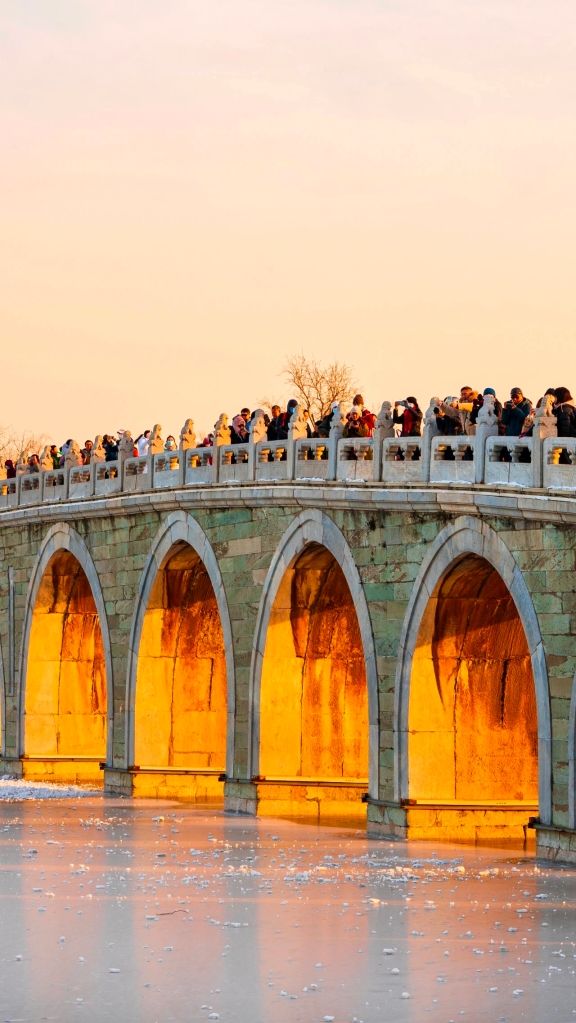Every year around the winter solstice, the setting sun passes through the Seventeen-hole Bridge on Kunming Lake in the Summer Palace, illuminating all seventeen bridge holes, presenting a magnificent landscape, commonly known as the “golden light hole”. Four o’clock in the afternoon is the best time to observe the beautiful scenery, attracting countless tourists to take pictures.

As time goes by, the bridge cavity goes from being a little bright to being completely illuminated by the setting sun. Since around the winter solstice, the sun’s altitude angle is the smallest, forming long oblique light and shadow, which can illuminate a lower angle. Therefore, before and after the winter solstice, you can see the golden light of the setting sun illuminating the entire bridge hole on the Seventeen-hole Bridge.

The west side of the Seventeen-hole Bridge was crowded with tourists and photography enthusiasts. They raised their cameras and mobile phones one after another, hoping to keep the beautiful scenery in winter in their memories forever.

The Seventeen-hole Bridge was built during the Qingyi Garden period and spans between Kuoruting and Nanhu Island. It is the only land bridge leading to Nanhu Island. Experts and researchers from the Summer Palace have verified the historical data about the bridges and light in the Summer Palace, and have not yet found any records related to the Seventeen-Arch Bridge and light in the historical data.

Zhao Xiaoyan, a senior engineer at the Summer Palace Management Office, said: “Before and after the winter solstice, more than a thousand tourists come to the Seventeen-hole Bridge every day to see the Golden Light Piercing Cave. The best observation points are concentrated and the space is relatively small. During this period, we We have also been adding more manpower since early December to maintain order so that people can watch such beautiful scenery in a safe and peaceful environment.”










